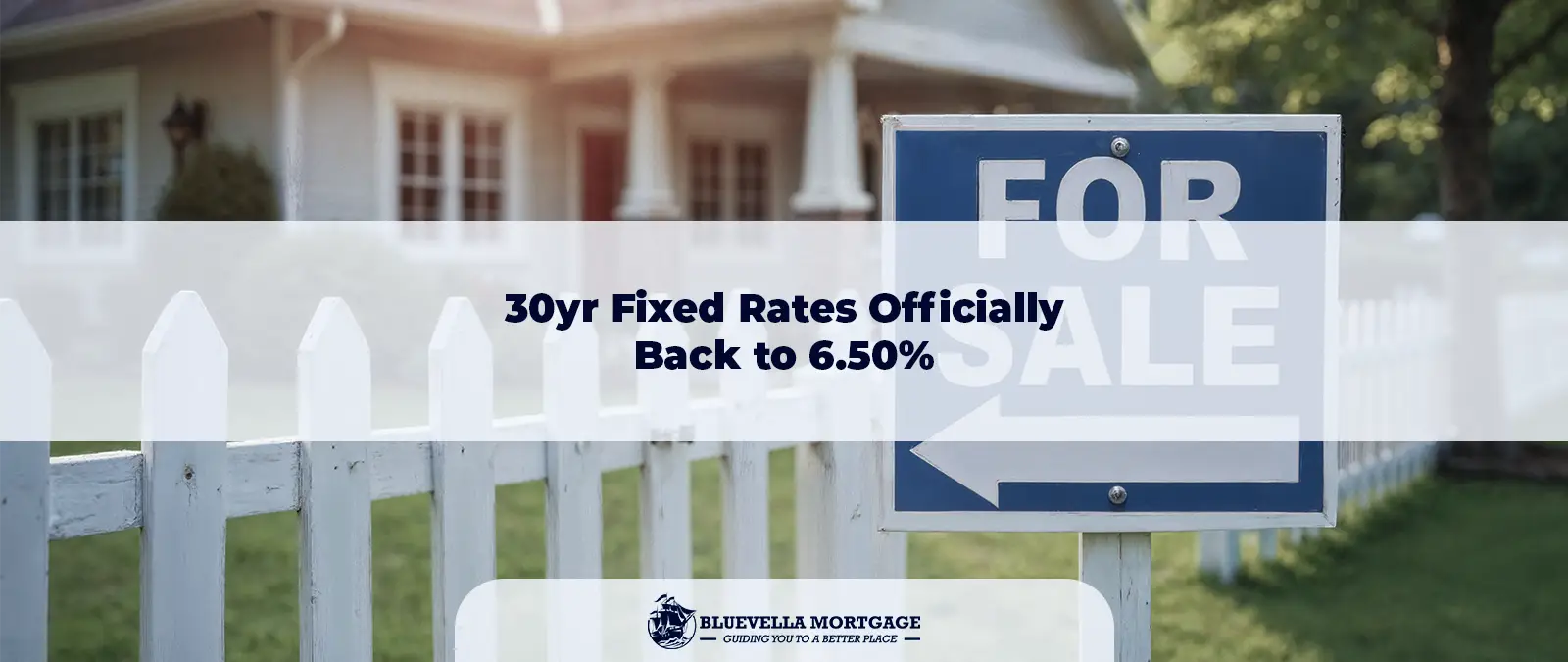Introduction to the Current Housing Market
The current housing market is experiencing significant shifts, primarily characterized by a noticeable decline in refinancing demand alongside a retreat of potential homebuyers. Several economic factors are at play, contributing to the evolving landscape of real estate transactions. A pivotal element influencing these changes is the rising interest rates, which have significantly affected affordability for new homebuyers. As interest rates climb, prospective buyers are increasingly hesitant to enter the market, fearing that higher borrowing costs could lead to inflated monthly payments and reduced purchasing power.
Additionally, the economic uncertainty stemming from various global events and domestic policy changes has prompted potential buyers to adopt a more cautious approach. Factors such as inflation, job market fluctuations, and changing consumer confidence are contributing to prevailing unease. As a result, many individuals who may have considered buying homes are opting to wait on the sidelines, further stifling demand in an already cautious market. Alongside this retreat, the volume of refinancing activity is similarly plummeting, as homeowners are discouraged from refinancing their existing mortgages due to unfavorable interest rates.
This confluence of shrinking market activity and reluctance to refinance is reshaping the overall housing environment. Real estate agents and lenders are feeling the impact, as decreased transactions lead to a slowdown in business. In this atmosphere, understanding the factors that are causing homebuyers to retreat is crucial. By examining the interplay between economic conditions and interest rates, we can gain insight into current market dynamics and the future outlook for housing. Ultimately, these trends highlight the complexity of the housing market in today’s rapidly changing economic context.
Also read: Refinance Apps: Staying Strong Near October’s Best Levels
Understanding Refinancing: What It Means for Homeowners
Refinancing refers to the process of replacing an existing mortgage with a new loan, typically under different terms. Homeowners often choose to refinance their mortgages to achieve various financial benefits, including lowered interest rates, reduced monthly payments, or the consolidation of debt. This financial strategy can be particularly appealing in changing economic conditions where interest rates fluctuate.
One of the primary reasons homeowners embark on the refinancing journey is to take advantage of lower interest rates. When market rates decline, refinancing can provide an opportunity for homeowners to secure a more favorable rate, which subsequently reduces their overall loan costs. Additionally, this can help them save a substantial amount of money over the life of the loan. Another significant aspect of refinancing is the potential to access home equity, allowing homeowners to borrow against the increased value of their property. This added capital can be utilized for various purposes, such as funding home improvements, paying off high-interest debt, or even financing a major life expense.
Personal financial situations also play a crucial role in determining when homeowners opt for refinancing. Changes in one’s financial circumstances—such as an increase in income, improvement in credit scores, or fluctuations in living expenses—can make refinancing an attractive option. Homeowners might look to refinance to shift to a more stable loan product, such as converting from an adjustable-rate mortgage (ARM) to a fixed-rate mortgage. Conversely, in times of economic uncertainty, the demand for refinancing may plummet, as homeowners exhibit caution in accessing capital. Various factors underscoring refinancing demand include macroeconomic conditions, interest rate trends, and individual financial goals, all of which contribute to the decision-making process surrounding this important financial maneuver.
Analyzing the Decline in Refinancing Demand
The recent decline in refinancing demand has become a focal point for both lenders and homeowners, reflecting broader trends within the housing market. According to the latest data, refinancing applications have experienced a substantial drop, with figures revealing a downturn of approximately 30% over the last few months. This notable decrease can be attributed to several factors, chiefly rising interest rates and shifting economic conditions, which have prompted many homeowners to reconsider their refinancing strategies.
One significant aspect contributing to this decline is the increase in mortgage interest rates, which have surged to levels not seen in recent years. When rates are higher, homeowners are less inclined to refinance their existing mortgages, as the potential savings diminish. Instead of finding suitable refinancing options, many choose to hold onto their current loans. This trend has led to a stagnation in the refinancing segment, compelling lenders to readjust their focus towards purchase loans rather than refinancing deals.
Moreover, the economic landscape has further complicated the refinancing scenario. Fluctuations in inflation and changes in Federal Reserve policy have created an unpredictable environment for borrowers. Many potential refinancing candidates may be hesitant to navigate the complexities involved, especially if they anticipate another rise in interest rates or a potential economic downturn. As a result, the overall demand for refinancing is stifled, affecting many lenders who rely on this service as a critical revenue stream.
In addition to financial considerations, a growing number of homeowners have opted to remain in their homes rather than pursue refinancing, reflecting a broader trend of market retreat. The convergence of these factors highlights the current challenges facing the refinancing sector and serves as a reminder of the dynamic nature of the housing market.
Factors Influencing Homebuyer Retreat
The current landscape of the housing market has been characterized by a notable retreat among homebuyers, primarily influenced by a confluence of critical factors. One of the most significant contributors to this trend is the surge in mortgage rates. As interest rates continue to rise, many prospective buyers find that the cost of borrowing has become prohibitively expensive. This increase in mortgage rates directly impacts monthly payments, making homeownership less attainable for a substantial segment of the population. Consequently, individuals are choosing to delay their purchases or withdraw entirely from the market.
In addition to rising mortgage rates, increased home prices have further deterred potential buyers. The real estate market has witnessed a sustained uptick in property values, outpacing wage growth and resulting in a widening affordability gap. Many would-be buyers are now faced with the stark reality that their purchasing power has diminished, causing them to reassess their homebuying plans. This dynamic is especially pronounced among first-time buyers, who often lack the financial reserves necessary to compete in a market characterized by escalating prices.
Economic uncertainty also plays a critical role in the decision-making process of homebuyers. With fluctuating markets and inflationary pressures, many individuals are hesitant to commit to significant financial investments such as purchasing a home. This caution is further exacerbated by shifts in consumer confidence, as broader economic conditions can significantly influence attitudes towards real estate purchases. As consumers grapple with these uncertainties, many prefer to adopt a wait-and-see approach rather than engage in potentially risky financial commitments. Overall, the combination of high mortgage rates, increased home prices, economic fluctuations, and consumer sentiment has culminated in a marked retreat from the housing market among homebuyers.
The Role of Interest Rates in the Housing Market
Interest rates serve as a critical factor in the dynamics of the housing market, influencing both the affordability of new mortgages and the viability of refinancing existing loans. Recently, there has been a notable increase in interest rates, which has led to a significant decline in refinancing demand among homeowners. When interest rates rise, the cost of borrowing increases, making home equity less accessible and deterring homeowners from refinancing to take advantage of better terms or extract equity from their homes. This phenomenon can be traced back through historical patterns, which consistently show that higher interest rates tend to suppress refinancing activity.
Moreover, rising rates also impact the homebuying landscape. As potential buyers face increased monthly mortgage payments due to higher interest rates, their purchasing power diminishes. This reduction in affordability often forces prospective homebuyers to reconsider their plans or delay their entry into the market. A direct correlation can be observed between the performance of the housing market and fluctuations in interest rates; as rates escalate, the number of home purchases tends to decline. The dual effect of decreased refinancing demand and diminished homebuyer willingness indicates a cooling effect on the real estate market.
In examining the historical context, periods of increased interest rates have frequently resulted in slower housing market activity. For instance, during previous economic cycles, sharp can declines in home sales were often preceded by rising rates. This historical insight provides valuable context for understanding current market trends. Overall, the interplay between interest rates and real estate activity is complex but clearly significant, with shifts in rates directly affecting both refinancing initiatives and homebuying propensity.
Implications for Future Homebuyers and Homeowners
The current trends in the housing market, characterized by a decline in refinancing demand, hold significant implications for both prospective homebuyers and existing homeowners. As interest rates rise in response to economic fluctuations, the purchasing power of potential buyers is increasingly constrained. Higher mortgage rates mean that homebuyers may have to lower their price expectations or consider less desirable neighborhoods to stay within budget. This shift could lead to a more competitive market where affordability becomes a central concern, fundamentally altering the landscape for new entrants.
For existing homeowners, the plummet in refinancing demand signals a shift in financial strategy. Many homeowners who previously benefited from low mortgage rates may find themselves hesitant to move. The opportunity cost of selling and transitioning into a higher-rate mortgage could hinder mobility, stalling potential upgrades or relocations. The reluctance to refinance can also create a backlog in the housing supply, influencing prices and inventory levels. Homeowners may need to rethink their long-term financial planning and assess the timing and necessity of refinancing, particularly if they are aiming for debt consolidation or accessing home equity.
The implications also extend to investment strategies for both groups. For potential homebuyers, it is crucial to stay informed about market fluctuations and consider their long-term financial goals when entering the housing market. Developing a robust financial plan that accounts for rising costs will be essential. Existing homeowners should evaluate their financial positions and explore options to mitigate the effects of a constrained market. Ultimately, both groups will need to navigate these changes with a focus on adaptability and sound financial decision-making, ensuring that they remain resilient in a volatile economic environment.
Lender Perspectives: Navigating a Changing Market
The recent decline in refinancing demand and the retreat of homebuyers have posed significant challenges for lenders and mortgage professionals. As interest rates rise and market dynamics shift, these professionals are implementing various strategies to remain competitive and responsive to the emerging environment. Adaptability becomes a crucial trait in this evolving landscape, particularly as lenders seek to mitigate risks associated with diminished demand.
Lenders are diversifying their product offerings to appeal to a broader range of consumers. In addition to traditional mortgage products, financial institutions are exploring alternatives such as adjustable-rate mortgages (ARMs) and special financing programs aimed at first-time homebuyers. By introducing flexible options tailored to the preferences and financial situations of potential borrowers, lenders can attract clientele even as refinancing demand wanes.
Another significant shift involves the enhancement of technological infrastructure. A growing number of lenders are incorporating advanced digital platforms and automation tools to streamline the mortgage application process. This not only improves operational efficiency but also enhances the customer experience, making it easier for borrowers to engage with the lending process. Providing a seamless online experience can be particularly beneficial in attracting tech-savvy consumers.
Moreover, mortgage professionals are placing an increased emphasis on education and communication. Given the complexities of the current market, lenders are proactively engaging with clients to provide valuable insights into mortgage rates, home value assessments, and financial planning. By fostering a culture of transparency and support, institutions can strengthen relationships with their clients and build trust during these uncertain times.
As the market landscape continues to evolve, it becomes evident that adaptability, innovative product offerings, and customer-centric approaches will define successful lending strategies in addressing the retreat of homebuyers and the decline in refinancing demand.
Advice for Homeowners Considering Refinancing
As the current climate presents unique challenges to homeowners pondering refinancing, it is essential to assess the situation carefully before making a decision. One primary factor to consider is timing. Refinancing usually makes sense when interest rates are lower than your current mortgage rate, allowing potential savings on monthly payments. However, with recent fluctuations and a general increase in rates, homeowners should calculate whether the potential savings justify the costs associated with refinancing, such as closing costs, appraisal fees, and other expenses.
Moreover, it is critical for homeowners to explore alternatives to traditional refinancing. For instance, a loan modification could be a viable option for those facing financial difficulties, allowing homeowners to negotiate better terms without incurring the costs linked to refinancing. Additionally, a home equity line of credit (HELOC) can offer access to funds without the need to refinance the existing mortgage. Understanding these alternatives might reveal less expensive or more suitable financial strategies for specific situations.
Furthermore, homeowners should evaluate various factors before making the decision to refinance. Key considerations include the current equity in the home, future plans for the property, and overall financial health. For homeowners who plan to move in the short term, refinancing may not be as beneficial, as it could take years to recoup initial investment expenses. On the other hand, if you expect to remain in your home for an extended period, refinancing might offer meaningful benefits. Ultimately, conducting thorough research and consulting with a financial advisor can provide clarity, ensuring homeowners make informed decisions that align with their long-term goals.
Conclusion: The Future of the Housing Market
The current state of the housing market signals a pivotal moment for both homebuyers and homeowners. As refinancing demand diminishes, it is evident that the landscape is shifting due to various economic factors. Rising interest rates have markedly influenced market dynamics, leading to a decrease in purchasing power for prospective buyers. This trend is further exacerbated by increasing home prices, creating an environment that many find challenging to navigate.
In light of these developments, it becomes crucial for individuals involved in real estate, whether they are potential buyers or current homeowners, to remain informed about ongoing changes in the market. Keeping abreast of economic indicators, interest rates, and housing supply trends will play a significant role in making sound decisions. The necessity for adaptation as market demands evolve cannot be overstated, as both buyers and homeowners must strategize accordingly to mitigate risks.
Looking ahead, several potential trends could significantly impact the housing market. For instance, if inflation rates stabilize and economic conditions improve, there may be a resurgence in homebuying activity. Additionally, the introduction of housing policies aimed at affordability could also alter the current narrative, providing relief for those looking to enter the market. The fate of refinancing options will also depend on future movements of interest rates and consumer confidence.
In conclusion, understanding the current dynamics and being aware of upcoming trends is essential for anyone involved in the housing market. Navigating this evolving landscape requires insight and flexibility, as market conditions will continue to shift, necessitating informed and strategic decision-making for successful outcomes.






